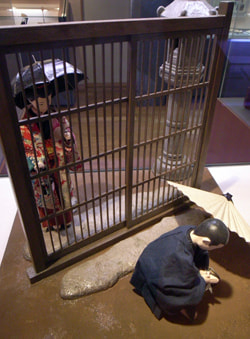
Midori and Shinnyo in "Takekurabe" -- Shinnyo fixes a thong, and Midori stands with red, Yuzen-dyed fabrics in her hands.

Her well-known novel "Takekurabe" was produced from her observation of people out in Daionji Street, Ryusenji-machi. It describes vividly a "Tori-no Ichi" fair crowded with visitors, and recounts Midori's, a main character, faint love for Shinnyo, a son of a monk in Ryugeji Temple, and feelings of Midori when she is bashful about Shotaro's gaze and realizes her maturity. It seems as if Ichiyo wrote about her fait love for her teacher "Nakarai," her mental suffering for the sudden dissolution of the teacher-pupil relationship and her state of mind, in which she realized her own growth from a girl to a woman.
Ogai Mori expressed great admiration for "Takekurabe" in "Sannin Jogo," which was a literary review by Ogai, Rohan Koda and Ryoku Saito in a magazine "Mezamashiso (April, 1896)." Ogai, who acclaimed Ichiyo, thought to add Ichiyo to "Sannin Jogo" and changed the name to "Yotsu Tazuna," but his attempt was not realized. Ichiyo's symptom of tuberculosis had already worsened. Ogai had his friend doctor visit to Ichiyo, but her condition was desperately wrong. Ichiyo died at the age of 24 on November 23, 1896.
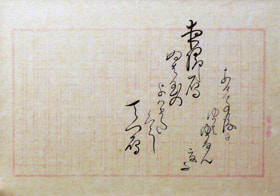
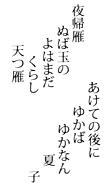
Ichiyo's manuscripts of "Yoru Kaeru Kari"
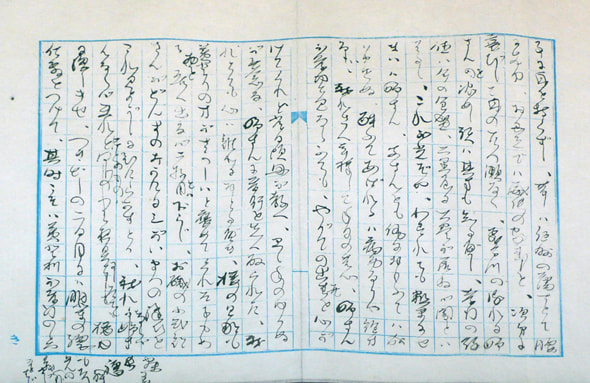
Unfinished manuscripts of "Takekurabe" -- the Ichiyo Memorial Hall keeps most of manuscripts of Takekurabe, from the latter part of Takekurabe (4) to (6). The writing papers were made by Mikagedo in Ikenohata Motokuromon-cho. There are 22 pages of unfinished manuscripts, which were written in February, 1895.
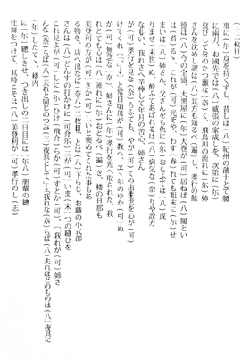

Midori and Shinnyo in "Takekurabe" -- Shinnyo fixes a thong, and Midori stands with red, Yuzen-dyed fabrics in her hands.















